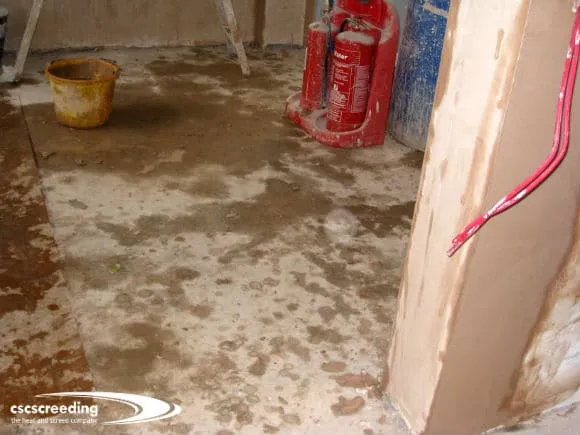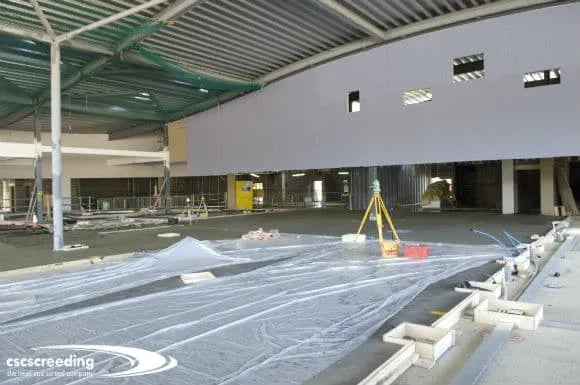
Perfect Floor Screed – Impossible without Appropriate Protection, Curing, and Drying

If you don’t protect your screed, expect trouble. Shocking?
Providing ideal curing and drying conditions for each type of screed is vital in order to ensure that screeds develop adequate strength and dry completely within the specified time frame. Additionally, applying temporary screed protection is the most basic measure a screeder can opt for to reduce the risk of screed failure caused by direct impact.
To cure screeds correctly, specialists use polyethylene sheets that can help control moisture evaporation during the setting process. By preventing the screed surface from drying out too quickly, common issues, such as screed cracking and curling, can be avoided.
Screed Protection

Floor screed leading edge protection
Protecting screeds from direct traffic and impact until they dry properly and develop adequate strength is as important as ensuring the right curing and drying conditions.
Though direct traffic and impact on screeds that have not dried completely and developed sufficient resistance to impact usually cause localised damage, lack of temporary protection may result in extended damage, affecting the performance of the entire screeded area.
Generally, light-foot traffic can commence as early as 24 to 48 hours for cement-based screeds, and even earlier for fast-drying and free-flowing anhydrite formulations. One important point is that many screeds, including fast-drying alternatives, will reach final strength after 28 days in usual ambient conditions.
Repairing or replacing screeds can be a time-consuming, expensive task. However, it may be necessary if temporary protection is not provided.
Screed Curing

Polythene sheets laid for screed curing
Basically, curing implies maintaining adequate moisture conditions for about seven days – the amount of time usually required for newly laid standard floor screeds to set and to begin developing the specified strength. To prevent excessive evaporation of moisture from the screed surface, which may cause cracking and lead to a weak construction, polyethylene sheets are laid on top of freshly installed screeds. After seven days, the sheets must be opened up to allow effective ventilation of the area and let the screed dry completely.
Screed curing and drying times are dependent on relative humidity levels, air and liquid permeability of screeds, and moisture content of the concrete slab. Since some proprietary screeds contain special admixtures, which control the curing and drying process, they do not require curing.
